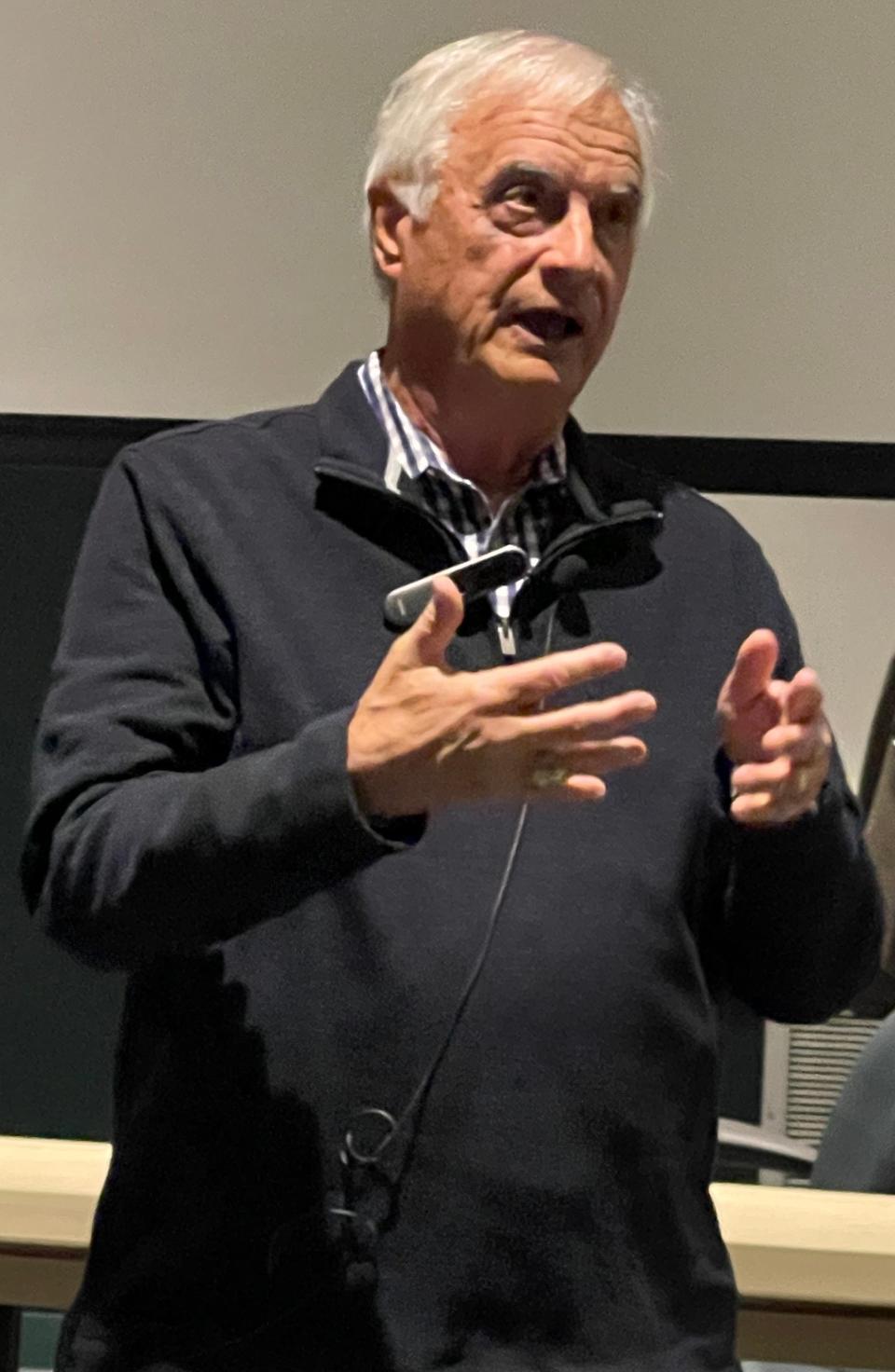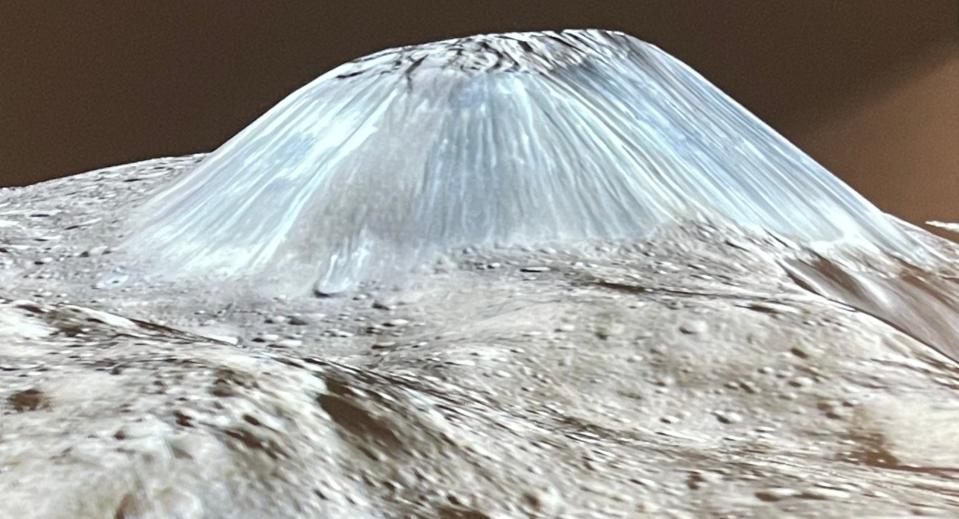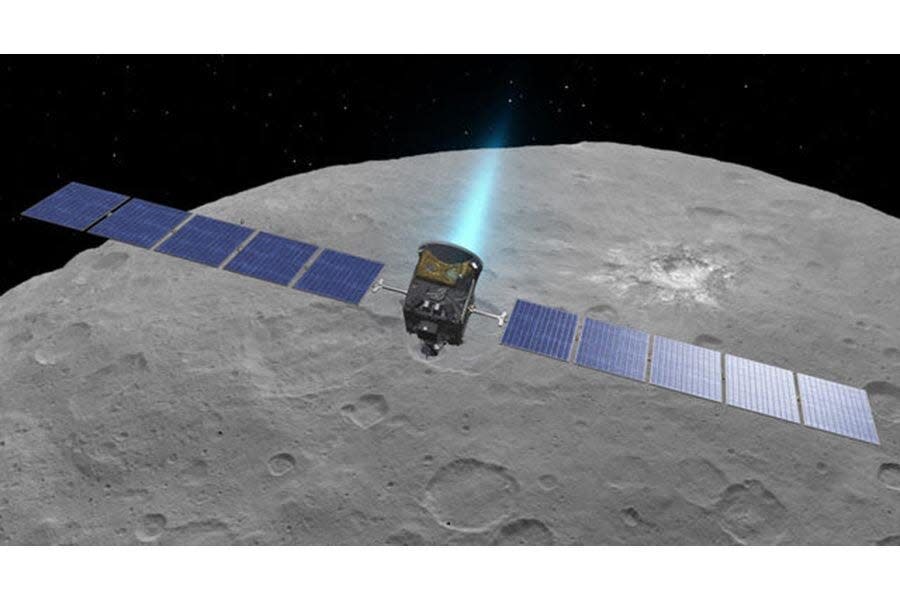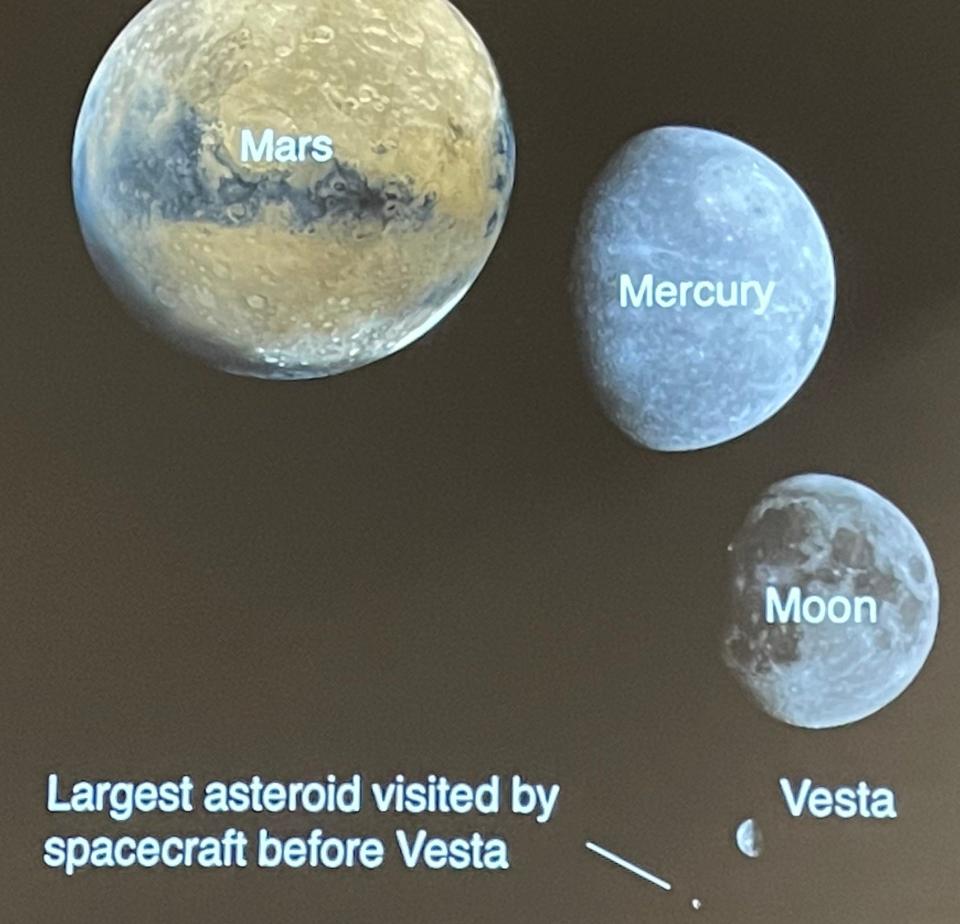Planetary geoscientist: How two 'star-like points of light' became geological worlds
At the dawn of the solar system over 4.6 billion years ago, eight terrestrial planets and the leftover space rubble called asteroids materialized as they orbited around the sun.

To astronomers the largest rocky remnants are “star-like points of light,” but the results of exploration by NASA’s Dawn spacecraft this century “transformed large asteroids from astronomical objects to geological worlds,” said Harry "Hap" McSween, a renowned planetary geoscientist, chancellor’s professor emeritus in the Department of Earth and Planetary Sciences at the University of Tennessee at Knoxville and a member of the National Academy of Sciences.
He recently presented the first Richard D. Smyser Community Lecture of 2023. It was co-sponsored by the Friends of Oak Ridge National Laboratory - which created the lecture series in memory of Smyser, founding editor of The Oak Ridger, who died in 2005 - and ORION, an amateur science and astronomy club centered in Oak Ridge.

Describing them as “leftover planetary raw materials,” McSween said, “Asteroids represent the original building blocks of the terrestrial planets, preserved as fossils from the dawn of the solar system. The asteroid belt is located between Mars and Jupiter. Vesta, a rocky body, and Ceres, an icy body, are the most massive residents of the asteroid belt.”

In his talk he described the Dawn spacecraft launched by NASA’s Delta II rocket in 2007 and Dawn’s scientific instruments. Then he presented new revelations concerning the geological features and mineral makeup of Vesta, source of hundreds of meteorites collected on Earth and home of a mountain taller than any peaks on Earth.
Next, he focused on Ceres, which was found to have an ice volcano. Ceres, which is the largest of the bodies in the asteroid belt, has been classified as the asteroid belt’s only dwarf planet. In 2006 our solar system’s ninth planet, Pluto, was demoted to a dwarf planet.
“The Dawn spacecraft is the largest interplanetary spacecraft that NASA has launched so far,” McSween said. “It became the fastest object ever made by man and it holds the record as three times the longest powered flight of any spacecraft.”
Dawn, which is parked in orbit around Ceres, has a wingspan of 20 meters so that it can carry sizable solar panels needed to capture sufficient energy from sunlight that is dim so far from the sun. The electricity from the panels turns xenon gas aboard into ions that are continuously pushed out the spacecraft’s rear to propel it forward easily because space has no air resistance.
Launched from Cape Canaveral 16 years ago, the Dawn spacecraft spiraled into orbit around the sun and swung close to Mars, where the spacecraft got a gravity assist that sent it into orbit around Vesta in 2011. Four years later it caught up with and made its rendezvous with Ceres.

The instruments aboard the Dawn spacecraft that helped scientists observe the large asteroids’ geological features and determine the chemical composition at and below surfaces were two framing cameras provided by the German Aerospace Agency and the Max Planck Institute; a gamma ray and neutron spectrometer (GRaND) provided by Los Alamos National Laboratory and a visible and infrared mapping spectrometer (VIR) provided by the Italian Space Agency and the Italian National Institute for Astrophysics.
Vesta, the brightest asteroid, is named after the Roman goddess of the hearth and household, and several smaller asteroids are named after the Vestal Virgins who kept her temple fire constantly burning. Ceres was named after the Roman goddess of grain and agriculture.
Ceres was discovered in 1801 by Giuseppe Piazzi, and six years later Heinrich Olbers found Vesta. Ceres is 567 miles across (913 kilometers) and Vesta has a diameter of 311 miles (501 km). Most asteroids in the belt range from six to 60 miles (10 to 100 km) in diameter.
McSween said he became interested in the Dawn mission because he has studied many meteorites and he wanted to know more about Vesta, long suspected to be the source of numerous meteorites that struck Earth.

“One of the really interesting discoveries when Dawn first arrived at Vesta was that its south pole has a hole in it,” McSween said. “There is a very large impact crater called Rheasilvia, named after the mythical mother of Romulus and Remus, founders of Rome. The central peak in the Rheasilvia Basin, which is a billion years old, is more than twice the height of Mt. Everest.”
McSween said the meteor impacts that created the overlapping giant basins of Rheasilvia and Veneneia excavated and ejected enormous amounts of material that flew away as meteors and survived passage through the atmosphere of Earth to reach it as meteorites.
He noted that Vesta “has been more extensively sampled on Earth in terms of meteorites collected than any other extraterrestrial body.” The mass of Vesta meteorites on our planet (over 3,000 pounds, or 1,400 kilograms) is 3.2 times as much as the meteorites and other samples collected here from our moon and 11 times as much as the mass of meteorites from Mars.
Other surprises revealed by Dawn, McSween said, was the presence of water on Vesta delivered by foreign objects.
“Precise tracking of Dawn’s orbit allowed a model of Vesta’s interior, which is dominated by a massive iron core,” he added. The core is estimated to be 136 miles, or 220 kilometers across, making it almost half the size of the entire asteroid.
“Unlike Vesta, Ceres contains large amounts of ice, as well as alteration minerals formed by the interaction of minerals with liquid water,” he said. “Although no meteorites are recognized to have come from Ceres, its composition is much like that of carbonaceous chondrites, but more pervasively altered.”
Carbonaceous chondrites, among the oldest minerals formed in the solar system, contain at least 3% carbon and 3% water, as well as silicates, oxides, sulfides, the olivine and serpentine minerals and organic compounds, sometimes including amino acids.
The surprising discoveries on Ceres, McSween said, were organic compounds and ice volcanoes, or cryovolcanoes, that “erupt brines, probably in the present day.” The brines consist of water in which various salts are dissolved. In addition, he noted, “Models of Ceres’ interior indicate a soft, muddy mantle and a rigid crust of ice, silicates and salts.” The daytime surface temperatures on Ceres span from -136°F to -28°F (at the equator).
He added that Ceres’ white spots indicate that it has sodium carbonates found in a lake on Earth and ammonium salts found on a moon of Saturn.
McSween was asked if NASA is looking into mining asteroids someday. McSween joked that it would certainly pay to mine asteroids if they were orbiting gold bars. NASA does have plans to send a spacecraft later this year to explore the 140-mile–diameter 16 Psyche asteroid, believed to be rich in iron, nickel and other metals.
At NASA meetings he’s attended, McSween said, one proposal is to land a spacecraft on Ceres and use its water ice to make hydrogen fuel for a subsequent launch of the spacecraft either back to Earth or toward another planet.

This article originally appeared on Oakridger: How two star-like points of light became geological worlds

